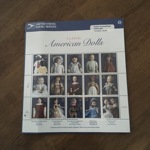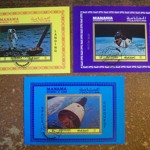FREE: U.S. Postage Stamp ( Francis Scott Key )

A member of Listia gave this away for free!
Do you want FREE stuff like this?
Listia is 100% Free to use
Over 100,000 items are FREE on Listia
Declutter your home & save money

"Listia is like EBay, except everything is free" - Los Angeles Times

"An Awesome Way To Give And Get Free Stuff" - Michael Arrington, TechCrunch
This Stuff is Free Too:

FREE

FREE

FREE

FREE

FREE
The listing, U.S. Postage Stamp ( Francis Scott Key ) has ended.
UsedU.S. #962
3¢ Francis Scott Key
Issue Date: August 9, 1948
City: Frederick, MD
Quantity: 120,868,500
Printed by: Bureau of Engraving and Printing
Printing Method: Rotary Press
Perforations: 11 x 10 1/2
Color: Rose pink
U.S. #962 honors “Star Spangled Banner” author Francis Scott Key. The stamp features a portrait of Key, American flags from 1814 and 1948, his family home, and Fort McHenry.
“The Star Spangled Banner”
“And the rockets red glare, the bombs bursting in air, gave proof through the night that our flag was still there. Oh, say, does that star-spangled banner yet wave o’er the land of the free and the home of the brave?” A respected young lawyer from Georgetown named Francis Scott Key (1779-1843) authored this excerpt, from one of the most famous songs ever written about the American flag.
The story of Key’s experience leading up to the writing of this song begins in August 1814. After the British invaded America’s capitol, and set fire to the White House, Key learned that a loved and respected physician from Upper Marlboro named Dr. William Beanes had been taken by the British. The locals asked Key to rescue him.
Key, joined by Colonel John Skinner, boarded the Tonnant, where Beanes was being held, and convinced the British to release him. However, the three had overheard many of the British plans and were held behind the British fleet. On September 13, 1814, the 25-hour battle began. The British fired 1,500 bombshells through the air by dawn on September 14, at which point they retreated.
Key anxiously waited in the darkness. He hoped that when light came, he might still see the flag. And, much to his relief, “the flag was still there.”
The poem he wrote on that day was set to the tune of the British drinking song, “The Anacreontic Song,” by John Stafford Smith. The Navy first officially used the song in 1889. President Herbert Hoover officially made it the national anthem in 1931 by a congressional resolution.
U.S. Postage Stamp ( Francis Scott Key ) is in the Collectibles | Stamps category

